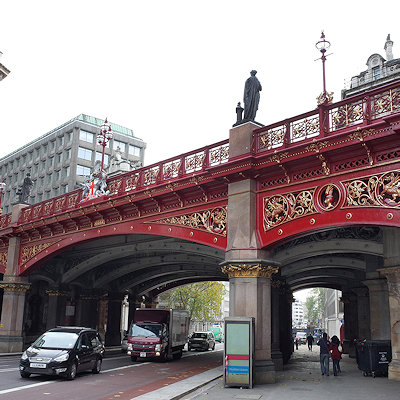
Like us on Facebook
PLACE NAMES


 
|
|
Holborn
|

| |
The name Holborn may be derived from the Middle English "hol" for hollow, and bourne, a brook, referring to the River Fleet as it ran through a steep valley to the east. Historical cartographer William Shepherd in his Plan of London about 1300 labels the Fleet as "Hole Bourn" where it passes to the east of St Andrew's church. However, the 16th century historian John Stow attributes the name to the Old Bourne ("old brook"), a small stream which he believed ran into the Fleet at Holborn Bridge, a structure lost when the river was culverted in 1732. The exact course of the stream is uncertain, but according to Stow it started in one of the many small springs near Holborn Bar, the old City toll gate on the summit of Holborn Hill. This is supported by a map of London and Westminster created during the reign of Henry VIII that clearly marks the street as 'Oldbourne' and 'High Oldbourne'. Other historians, however, find the theory implausible, in view of the slope of the land.
The Holborn District was created in 1855, consisting of the civil parishes and extra-parochial places of Glasshouse Yard, Saffron Hill, Hatton Garden, Ely Rents and Ely Place, St Andrew Holborn Above the Bars with St George the Martyr and St Sepulchre. The Metropolitan Borough of Holborn was created in 1900, consisting of the former area of the Holborn District and the St Giles District, excluding Glasshouse Yard and St Sepulchre, which went to the Metropolitan Borough of Finsbury. The Metropolitan Borough of Holborn was abolished in 1965 and its area now forms part of the London Borough of Camden.
|
 Feel free to Email me any additions or corrections Feel free to Email me any additions or corrections
LINKS AVAILABLE TO YOUR SITE
| |





